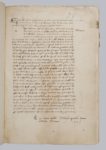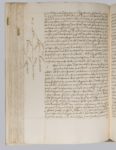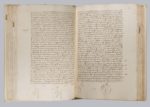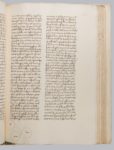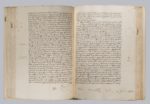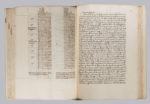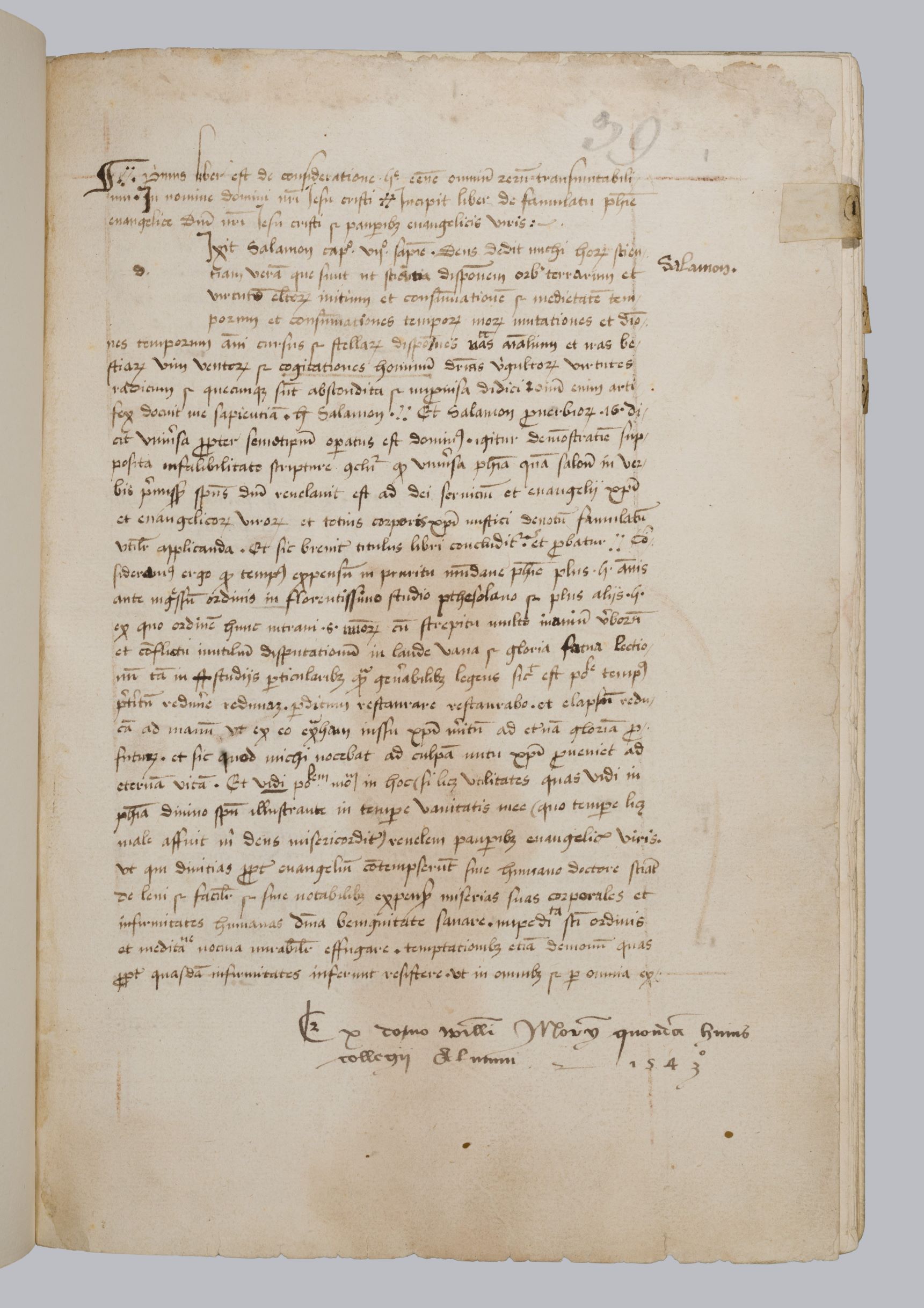
Roger Bacon and Johannes de Rupescissa, Scientific and alchemical miscellany, late 15th century [MS39]
England, probably Oxford
Manuscript on paper, ff. 221. Bound in alum-tawed white pigskin over pasteboard by Roger Powell, 1957 (30.7 x 21.4 cm)
This 15th-century compilation brings together important texts on science and alchemy originally written in the 13th and 14th centuries. They were copied by multiple hands, probably in Oxford.
The manuscript begins with the De Consideratione quintae essentiae (fols 1r–34v), attributed to the French theologian and alchemist Johannes de Rupescissa (c. 1310–62), and an anonymous treatise on alchemy (fols 35r–42r).
The remaining three texts are by Roger Bacon (c. 1219–92), a medieval philosopher and scientist who studied at Oxford before teaching at the University of Paris. His works here include De multiplicatione specierum (fols 47r–85v), a text on optics; a fragment of the Opus Maius (fols 86r–181v), which contains sections on perspective, astronomy, weights, alchemy, agriculture, medicine, experimental science, and philosophy of science; and the Opus Tertium (fols 182r–197v), which functions as an introduction to the Opus Maius. The latter two texts were sent to Pope Clement IV (1190–1268) upon his request in 1267.
This manuscript is significant as it provides the only known source for part of Bacon’s Opus Tertium, a section on geography and astrology (fols 183–98), which was believed lost until its discovery by A. G. Little in 1912.
Bacon’s works are illustrated by diagrams in the margins. The second image reproduced here, for example, accompanies his text on optics. It shows light (coming from the light source (sol) on the left) being refracted by a spherical glass container full of water. The fourth image shows an astronomical diagram, which helps to illustrate why the Moon (luna) does not always appear as a circle from the Earth’s perspective, and why it seems to change shape as its placement in relation to the Sun (sol) and Earth (terra) changes.
Literature: Edward Bernard, Catalogi librorum manuscriptorum Angliae et Hiberniae in unum collecti, Vol. 2 (Oxford, 1697), p. 31, no. 1364; Andrew George Little, ‘The missing part of Roger Bacon’s Opus Tertium’, The English Historical Review (April 1912), pp. 318–21; A. G Little (ed.), Part of the Opus Tertium of Roger Bacon including a fragment now printed for the first time (Aberdeen, 1912); A. G Little (ed.), Roger Bacon Essays: Contributed by various writers on the occasion of the commemoration of the seventh centenary of his birth (Oxford, 1914), pp. 379, 387, 391, 392–93, 411, 413, 416; Dorothea Waley Singer and Annie Anderson, Catalogue of Latin and Vernacular Alchemical Manuscripts in Great Britain and Ireland Dating from before the XVI century (Brussels, 1928), vol. 1: pp. 166, 167; vol. 2: pp. 239, 274; Neil R. Ker and Alan J. Piper, Medieval Manuscripts in British Libraries, Volume IV: Paisley–York (Oxford, 1969), pp. 626–27; John M. G. Blakiston, ‘The Fellows’ Library: Sir Thomas Phillipps and After’, in Roger Custance (ed.), Winchester College: Sixth-Centenary Essays (Oxford, 1982), pp. 403–29, 426; David Lindberg (ed. and trans.), Roger Bacon’s Philosophy of Nature: A critical edition, with English translation, introduction, and notes, of De multiplication speciierum and De speculis comburentibus (Indiana, 1998), p. lxxviii; James M. W. Willoughby, The Libraries of Collegiate Churches, Vol. 2 (London, 2013), p. 813.
Provenance: Given to Winchester College by William Moryn, 1543.
Location: Fellows’ Library
